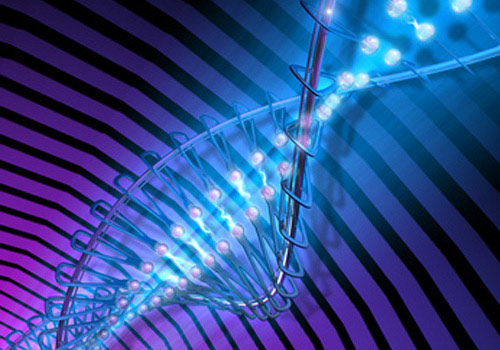 The CRISPR-Chip garnered much attention earlier this year when the novel graphene-based biosensor CRISPR-Cas technology was introduced in a Nature Biomedical Engineering publication in March. This week, the two companies that have been straddling the technology that is able to detect a specific genetic mutation from a sample without the need for amplification or sequencing announced that they have merged. In addition, they have revealed an early access launch of their CRISPR-chip based product—Genome Sensor. We sat down with the founders of the companies at the AGBT precision health meeting in La Jolla, California, to learn more about how the CRISPR-chip came to be and their future goals.
The CRISPR-Chip garnered much attention earlier this year when the novel graphene-based biosensor CRISPR-Cas technology was introduced in a Nature Biomedical Engineering publication in March. This week, the two companies that have been straddling the technology that is able to detect a specific genetic mutation from a sample without the need for amplification or sequencing announced that they have merged. In addition, they have revealed an early access launch of their CRISPR-chip based product—Genome Sensor. We sat down with the founders of the companies at the AGBT precision health meeting in La Jolla, California, to learn more about how the CRISPR-chip came to be and their future goals.
The story of how the CRISPR-Chip evolved is from the outside, “a little bit messy” according to CEO Michael Heltzen. But, on the inside, he notes, it is “very logical.”
Heltzen met the founders of the company Cardea roughly six years ago. Brett Goldsmith, PhD, CTO of Cardea and one of the two founders, has a background in nanotechnology, having trained in the lab of Phil Collins, PhD, professor of physics and anatomy at the University of California, Irvine. The Collins lab works on carbon nanotubes, which are excellent sensors but can be challenging to think about manufacturing at scale, according to Goldsmith. It was when Goldsmith moved to the lab of Charlie Johnson, PhD, at the University of Pennsylvania that he learned to work with graphene. A few years later, in December 2013, Goldsmith founded Cardea to continue the work on graphene sensors.
Goldsmith told GEN that Cardea was able to make the graphene chips, but he “didn’t know how to make something useful” using their technology. He thought, at the time, that they would find someone with a piece of biology that would result in a “killer application.” He says that he “just needed to find that person.”
Goldsmith found that person in Kiana Aran, PhD, who was working on graphene biosensors at the University of California, Berkeley. But, she says that she spent so much time working on the chips and not the application, that she would sometimes have to drop projects because it was too challenging.
While designing digital-based biosensors at Berkeley, she says, “CRISPR happened” and she had the idea to put CRISPR onto the graphene transistors that they were developing. She says that, at the time, most people were thinking about gene editing with CRISPR. But, she wanted to build a simple system with multiple functions that harnesses the core power of CRISPR—which is genome searching rather than the more notorious role of genome editing.
As Aran was trying to obtain funding for the fabrication of the graphene chips, which she notes is a more sensitive sensor than silicon-based sensors, one of her friends mentioned the work going on at Cardea. Her interest piqued, she sent an email asking to test their system. When her month-long demo was up, Goldsmith remembers Aran telling him, “you cannot take this demo away from me. But, I’m not going to buy it either.” She told him that she was developing a new nanotechnology using CRISPR-Cas to perform DNA detection and, “you want to be on this.” The result is the first commercial company to produce a biosensor using a graphene chip.
It was “super important” for Aran to get her project out of the lab and collaborating with Cardea solved the problem of how she would mass produce the graphene sensors. She had found a path for this to become a commercial system.
During this period of collaboration between Cardea and Aran, Heltzen and Aran started their company, Nanosens Innovations. Heltzen reports that the idea for Nanosens was started over a “four-hour cup of coffee” that he and Aran shared about a year and a half ago, while she was a faculty member at Keck Graduate Institute and credits Aran for knowing that the time was right to start making a move on CRISPR based sensors.
This week, in addition to the announcement of the merger of Cardea and Nanosens Innovations, they are also announcing the launch of the CRISPR-chip product, the Genome Sensor. Using this product, sold under the Nanosens brand, users will be able to use their guide RNAs to “google genomes,” noted Aran.
Although using the Genome Sensor in the diagnostic space seems to be one of the first places to target, Heltzen told GEN that they are talking with different partners about “hundreds of different applications” to harness the innovation of the CRISPR-chip. One idea, he noted, is a “DNA Tricorder for farmers” that would be able to obtain information about various pests in the fields, based on the fictional handheld device from Star Trek. Although that may sound like science fiction, Aran asserted that “all that you really need is a known DNA sequence,” and the rest is up to the imagination.




